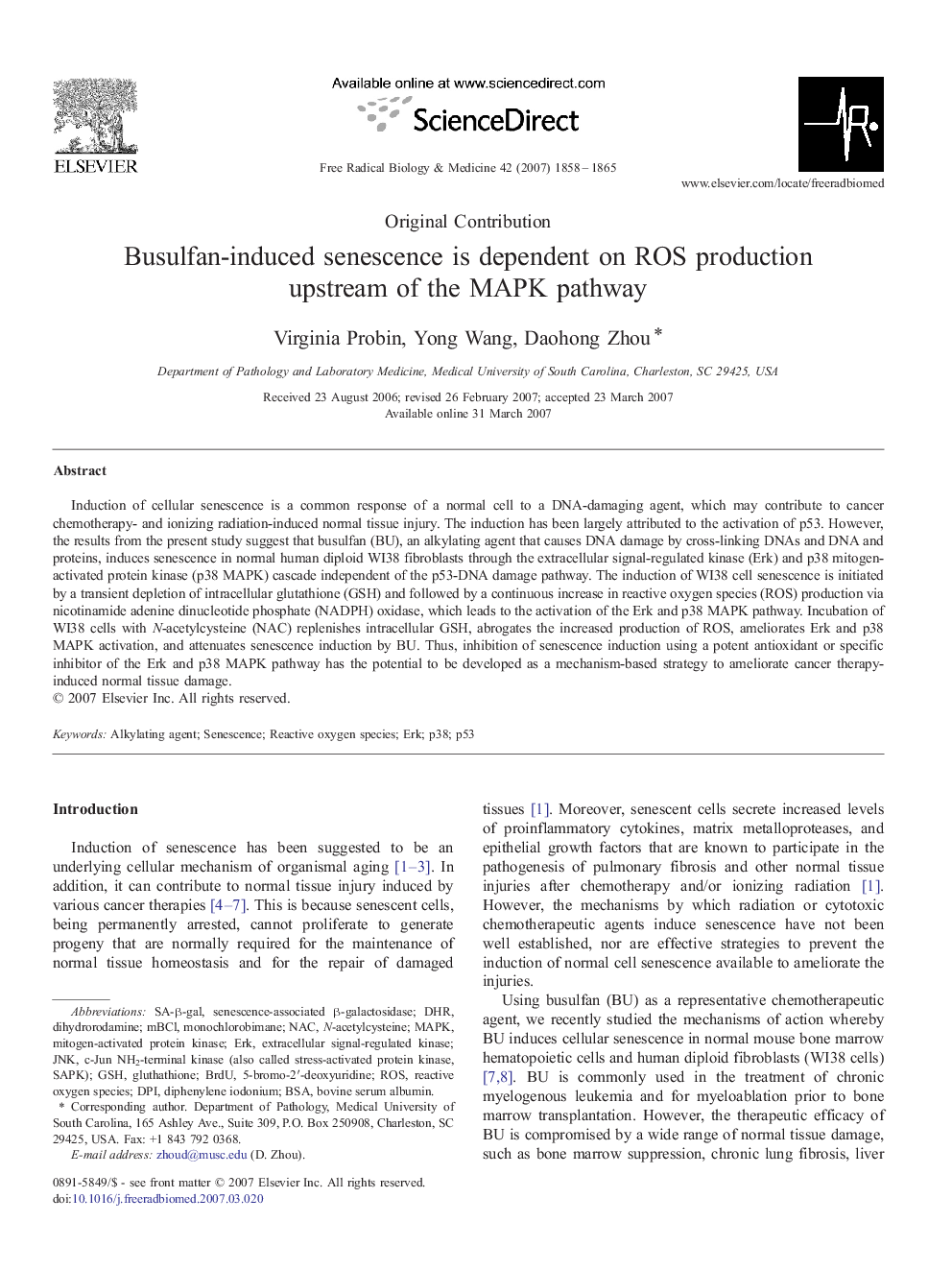| کد مقاله | کد نشریه | سال انتشار | مقاله انگلیسی | نسخه تمام متن |
|---|---|---|---|---|
| 1911188 | 1046805 | 2007 | 8 صفحه PDF | دانلود رایگان |

Induction of cellular senescence is a common response of a normal cell to a DNA-damaging agent, which may contribute to cancer chemotherapy- and ionizing radiation-induced normal tissue injury. The induction has been largely attributed to the activation of p53. However, the results from the present study suggest that busulfan (BU), an alkylating agent that causes DNA damage by cross-linking DNAs and DNA and proteins, induces senescence in normal human diploid WI38 fibroblasts through the extracellular signal-regulated kinase (Erk) and p38 mitogen-activated protein kinase (p38 MAPK) cascade independent of the p53-DNA damage pathway. The induction of WI38 cell senescence is initiated by a transient depletion of intracellular glutathione (GSH) and followed by a continuous increase in reactive oxygen species (ROS) production via nicotinamide adenine dinucleotide phosphate (NADPH) oxidase, which leads to the activation of the Erk and p38 MAPK pathway. Incubation of WI38 cells with N-acetylcysteine (NAC) replenishes intracellular GSH, abrogates the increased production of ROS, ameliorates Erk and p38 MAPK activation, and attenuates senescence induction by BU. Thus, inhibition of senescence induction using a potent antioxidant or specific inhibitor of the Erk and p38 MAPK pathway has the potential to be developed as a mechanism-based strategy to ameliorate cancer therapy-induced normal tissue damage.
Journal: Free Radical Biology and Medicine - Volume 42, Issue 12, 15 June 2007, Pages 1858–1865